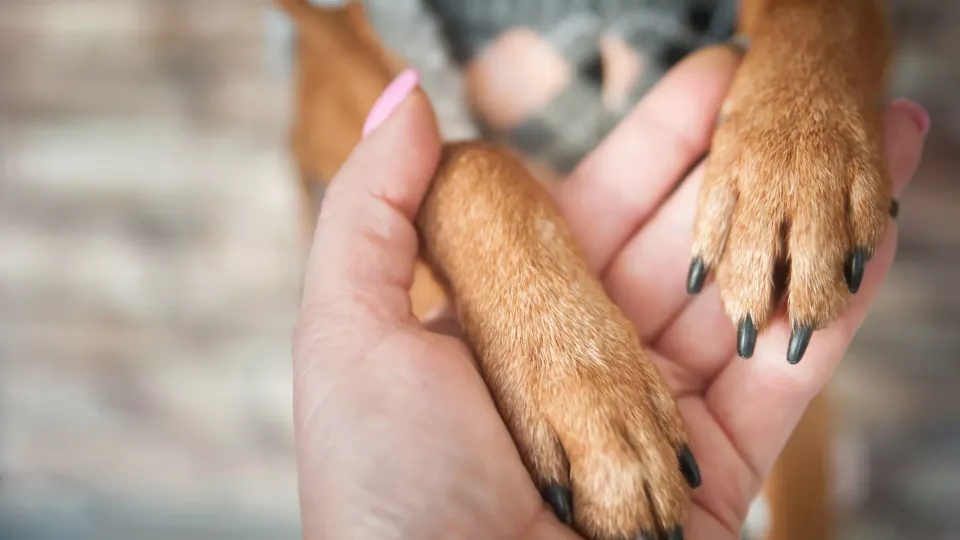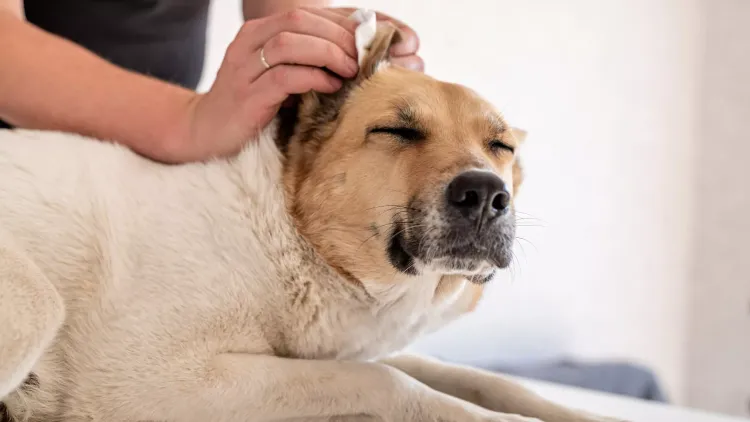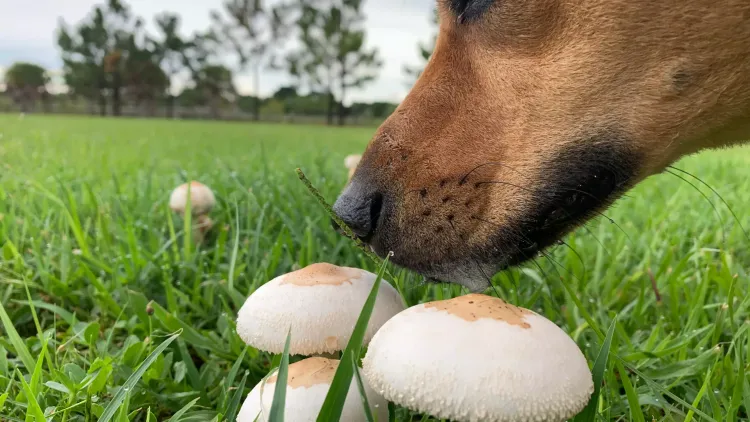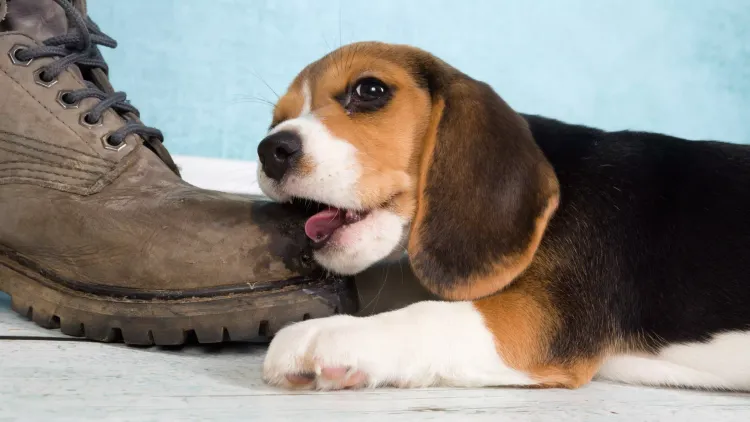Step by Step: Ensuring Healthy Paws for Your Dog

Every dog owner knows the joy of being greeted by their furry friend, wagging tail, and eager paws. These paws not only carry them to their favorite parks and play spots but also act as their primary touchpoint with the world around them. They experience the earth beneath them, whether it's the soft grass of your backyard, the rough trails of a mountain hike, or the cool waters of a beach.
However, how often do we, as pet parents, pay attention to those paws? They're more than just cute footprints; they're a vital part of our dog's health and well-being. Just as human feet require care, dog paws need regular attention too. This guide will delve deep into the essentials of dog paw care, ensuring that every step your furry friend takes is a comfortable and healthy one.
1. Regular Paw Checks:
Regular paw inspections are crucial for every dog owner, acting as a preventive measure against potential health issues. By routinely examining your dog's paws, you can identify and address minor problems before they escalate. This not only ensures your dog's comfort but also fosters trust, as your dog becomes accustomed to having their paws handled.
- Inspect the pads: Look for injuries like cuts, blisters, or foreign objects.
- Check between the toes: This area can harbor pebbles, ticks, or burrs.
- Look for signs of infections: Swelling, redness, or discoloration can indicate underlying issues.
- Examine the nails: Ensure they're healthy and free from fungal infections.
- Observe your dog's behavior: Pulling away or whimpering can signal pain or sensitivity.
2. Keep Them Clean
Maintaining clean paws is about more than just your dog's appearance; it's a vital step in ensuring their overall health. As dogs explore the outdoors, their paws come into contact with various elements, some of which can be detrimental. Regularly cleaning their paws not only removes these harmful substances but also prevents potential health issues.
- Post-walk wash: Always rinse paws after walks, especially if they've been in muddy or snowy areas.
- Urban areas: Be cautious of chemicals or salts on pavements that can be toxic if ingested.
- Focus on fur: For dogs with longer fur between their toes, ensure it's clean and dry to prevent bacterial growth.
- Reduce allergens: Cleaning paws can minimize exposure to allergens like pollen.
- Use lukewarm water: It's gentle on the paws and effective in removing debris.
3. Moisturize
Proper hydration is essential for your dog's paw health. External factors, from rough terrains to extreme weather conditions, can deplete the natural oils in their paws, leading to dryness and cracks. By incorporating moisturizing into your dog's care routine, you ensure their paws remain soft, healthy, and resilient against daily challenges.
- Choose dog-specific balms: Opt for products designed for deep hydration and healing.
- Natural ingredients: Look for moisturizers containing shea butter, coconut oil, or beeswax for added benefits.
- Massage is beneficial: A gentle massage helps the product absorb and promotes circulation.
- Avoid pre-walk application: Moisturized paws can be slippery; let the product absorb fully before heading out.
- Regular application: Consistency is key for optimal paw health.
4. Trim Those Nails
Keeping your dog's nails trimmed is more than just a grooming routine; it's vital for their comfort and overall mobility. Overgrown nails can cause pain, affect your dog's gait, and even lead to joint problems. Regular nail trims ensure that your dog can walk comfortably and prevent potential health complications.
- Frequency matters: Depending on your dog's activity level and nail growth rate, trimming might be needed every few weeks.
- Use the right tools: Invest in a good-quality nail clipper or grinder designed for dogs.
- Avoid the quick: Cutting into this sensitive part can cause pain and bleeding. If unsure, seek professional help.
- Positive reinforcement: Reward your dog after nail trims to create a positive association.
- Monitor their walk: If you hear their nails clicking on the floor, it's likely time for a trim.
5. Beware of Hot Surfaces
Whether it's the scorching heat of summer or the icy chill of winter, extreme weather conditions can be harsh on your dog's paws. Direct exposure can lead to burns, frostbite, or other injuries. As responsible pet owners, it's crucial to take measures to protect your dog's paws from these environmental challenges, ensuring their safety and comfort.
Key Takeaways:
- Summer precautions: Avoid hot pavements or sand, which can cause burns. Opt for early morning or evening walks when it's cooler.
- Winter care: Use dog boots or paw waxes to protect against cold, ice, and salt.
- Hydration: Just as in humans, hydration can affect skin health. Ensure your dog has access to fresh water at all times.
- Use protective gear: Consider dog shoes or booties for added protection during extreme conditions.
- Post-walk care: After walks in challenging terrains or weather, inspect and clean paws to remove any debris or harmful substances.
6. Winter Care
Winter presents a unique set of challenges for our furry friends. The cold temperatures, icy terrains, and the chemicals used to melt snow can be harsh on a dog's paws. It's essential to take proactive measures during these colder months to ensure that your dog's paws remain healthy, protected, and free from potential hazards that winter might bring.
- Dog boots: These provide a barrier against cold surfaces and sharp ice, ensuring paws remain warm and injury-free.
- Paw balms and waxes: Create a protective layer, shielding paws from salt and chemicals.
- Limit outdoor time: During extreme cold, reduce the duration of walks to prevent frostbite.
- Wipe down after walks: Remove ice, snow, and chemicals by cleaning your dog's paws post-walk.
- Stay vigilant: Monitor your dog's paws for signs of dryness, cracks, or injuries, addressing any issues promptly.
7. Paw Massage
Paw massages offer more than just a relaxing experience for your dog; they provide a range of health benefits. Regularly massaging your dog's paws can improve circulation, reduce tension, and help identify potential issues early on. It's a bonding activity that not only ensures your dog's comfort but also their overall paw health.
- Improved circulation: Massaging stimulates blood flow, promoting healthier paws.
- Stress relief: Just like in humans, a good massage can help dogs relax and reduce anxiety.
- Early detection: Regular touch allows you to feel for abnormalities, like lumps or injuries.
- Flexibility: Massaging can help maintain the flexibility of the paw pads and reduce stiffness.
- Use dog-specific oils or balms: These can enhance the massage experience and provide additional moisturization.
8. Avoid Harmful Chemicals
Many households and outdoor areas contain chemicals that, while seemingly harmless to humans, can be detrimental to our canine companions. From cleaning agents to lawn care products, these substances can irritate a dog's paws or pose more severe health risks if ingested. Being aware of and avoiding these harmful chemicals is paramount in ensuring the safety and well-being of your dog's delicate paws.
- Household cleaners: Always choose pet-friendly cleaning products and ensure floors are thoroughly rinsed.
- Lawn and garden: Opt for non-toxic fertilizers and pesticides, and be wary of plants that may be harmful if chewed.
- Winter salts: These can cause burns and are toxic if ingested. Always clean paws after walks in snowy or icy conditions.
- Spill response: Clean up any chemical spills immediately and keep products securely stored away from pets.
- Awareness: Regularly check for updates on potentially harmful products and always read labels before use.
9. Invest in Protective Gear
The world is full of terrains and conditions that can be tough on a dog's paws. From scorching pavements to rugged trails, protective gear can play a pivotal role in safeguarding your dog's feet. Investing in quality protective equipment ensures that no matter where your adventures take you, your dog's paws remain shielded from potential harm, allowing them to explore with confidence and comfort.
- Dog booties: Ideal for hot pavements, icy paths, or rough terrains, they provide a barrier against potential hazards.
- Paw waxes: Offer a protective layer against heat, cold, and rough surfaces, and can also moisturize.
- Waterproof socks: Useful for wet conditions, they keep paws dry and prevent prolonged exposure to moisture.
- Reflective gear: Enhances visibility during nighttime walks, ensuring safety from vehicles.
- Regular checks: Ensure that any protective gear fits well and is in good condition, replacing as needed.
10. Address Allergies
Just like humans, dogs can also suffer from allergies, and their paws often bear the brunt of these reactions. Allergens from the environment, food, or even household products can lead to itchy, inflamed, and sore paws. Recognizing the signs of allergies and taking swift action can alleviate discomfort and prevent further complications, ensuring your dog's paws remain healthy and irritation-free.
- Common allergens: Pollen, mold, certain foods, and household cleaning products can trigger allergic reactions.
- Symptoms: Watch for excessive licking, redness, swelling, or any unusual behavior related to their paws.
- Immediate relief: Cool water soaks or oatmeal baths can provide temporary relief from itching.
- Consultation: Always consult a veterinarian for a proper diagnosis and treatment plan.
- Prevention: Identify and eliminate the source of the allergen, and consider hypoallergenic products for your home.
Wrapping Up
Dog paw care is more than just a routine; it's a testament to the bond and commitment we share with our furry companions. By being proactive and attentive to their needs, we not only ensure their comfort but also their overall well-being. Our dogs rely on their paws for exploration, play, and connection, and it's our responsibility to ensure they remain in optimal condition.
Moreover, the steps we take in paw care can also serve as moments of bonding and trust-building with our pets. Whether it's through a gentle massage, a protective measure, or simply checking for any issues, these moments reinforce the love and care we have for them. After all, a happy paw leads to a happy dog, and a happy dog leads to a joyful home.



